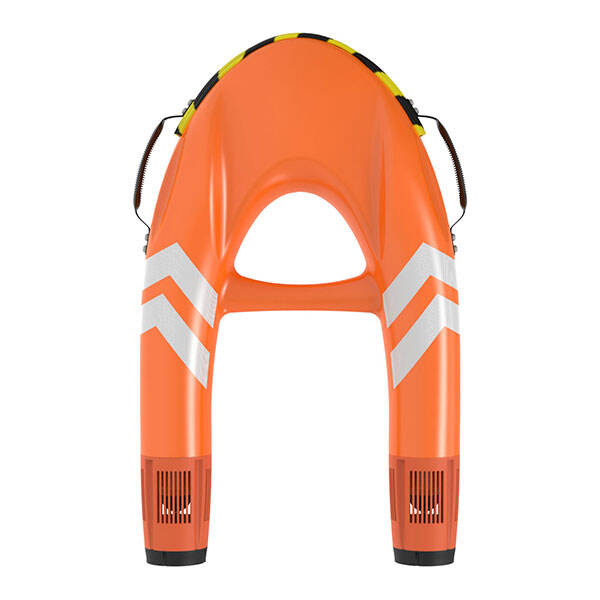Understanding Urban and Coastal Flood Risks
Types of Flooding: Riverine, Coastal, and Urban Flash
Flooding presents significant risks in both urban and coastal settings, manifesting in several forms. Riverine flooding primarily occurs near rivers, inundating surrounding lands when riverbanks overflow due to heavy rain or melting snow. This type of flooding is a recurrent issue in areas closely aligned with large river systems, affecting agriculture, infrastructure, and communities nestled along these waterways.
Coastal flooding, on the other hand, is often prompted by storm surges and high tides linked to climate changes, such as rising sea levels and increased storm intensity. It poses immense threats to coastlines worldwide, eroding landscapes and surging into urban areas with devastating impacts. According to a study by the National Oceanic and Atmospheric Administration (NOAA), coastal floods are predicted to increase in both frequency and severity, accentuating the environmental vulnerabilities of coastal regions.
Urban flash flooding occurs swiftly due to rapid urbanization and insufficient drainage systems that fail to handle intense, sudden downpours. This type of flooding often emerges with little warning, catching residents off-guard and causing substantial damage to properties and infrastructure. NOAA statistics reveal a growing trend in urban flash flooding events, underscoring the need for more robust drainage solutions and preventative measures.
Key Challenges in Disaster Preparedness
Organizations face multiple challenges in flood risk assessment and disaster preparedness. Accurately predicting flood patterns and future climate events is a complex task that requires advanced modeling technologies and comprehensive data analysis. This challenge is compounded by infrastructure limitations. Many cities have outdated drainage systems and lack sufficient physical flood barriers, making them vulnerable to substantial flood risks.
Social factors also come into play, such as enhancing public awareness. Ensuring that communities are adequately informed and prepared for evacuations is crucial during flood emergencies. Effective resource allocation is necessary to support those affected, yet some regions struggle with the logistics of distribution and communication.
Regarding infrastructure, reports from FEMA highlight the urgent need for improvements in flood preparedness. Upgrades in drainage systems and increased public education on flood risks are pivotal steps in enhancing disaster readiness. Additionally, FEMA emphasizes the integration of flood sensors and adaptive infrastructure to provide real-time alerts and manage resources efficiently. These strategic measures are critical in safeguarding lives and property against escalating flood threats.
Urban Applications: Protecting Infrastructure and Homes
Flood barriers play a crucial role in urban environments by protecting infrastructure and homes from the damaging effects of floods. These barriers are designed to shield buildings, roads, and critical infrastructure from floodwaters. Urban regions employ various types of flood barriers such as temporary barriers, which can be quickly deployed in emergencies, and permanent levees that provide long-term protection. A notable example is the use of modular barriers, which have proven effective in diverting floodwaters away from vital facilities. Successful implementations, like those in New York City, demonstrate how such systems can mitigate flood impacts, as evidenced by reduced damages during hurricane events.
Urban planning can be significantly enhanced through the integration of flood barrier systems. Incorporating flood barriers within existing and new urban developments boosts resilience against disasters. Many cities have started adapting their infrastructure plans to include these protective measures, resulting in a more adaptive and resilient urban environment. This proactive approach not only safeguards the current infrastructure but also ensures readiness for future flood events, aligning with broader disaster mitigation strategies.
Coastal Defense: Storm Surge Barriers and Erosion Control
Storm surge barriers are critical in coastal defense, especially in areas prone to hurricanes and rising sea levels. These barriers are engineered to resist the pressure from extreme waves, thereby protecting coastal regions. Erosion control measures, such as seawalls and natural solutions like mangrove restoration, play a vital role in preserving coastlines. For instance, the Thames Barrier in London has been pivotal in preventing tidal surges, safeguarding the city during severe weather.
Several coastal cities have effectively employed these solutions. The Netherlands, known for its innovative flood defense mechanisms, has successfully used dikes and natural barriers to control erosion and protect against sea-level rise. Reports indicate that consistent investment in these barriers results in substantial long-term savings by reducing disaster recovery costs. A study reveals that every $1 invested in coastal barriers saves approximately $6 in future economic losses, underlining their cost-effectiveness and importance in mitigating hurricane impacts and preserving the coastal environment.
Flood Control System Door Entrance Barrier
Features for Home and Business Protection
Flood barriers designed specifically for door entrances play a critical role in safeguarding both homes and businesses. These doorway flood barriers are crafted with durable materials such as reinforced aluminum or high-grade PVC, providing robust defense capable of withstanding significant water pressure. The height of these barriers can be customized to suit the specific needs of a location, ensuring comprehensive protection against floodwaters. Easy to install and use, these barriers offer an effective quick-response feature akin to products like the "quick dam flood barrier," allowing swift deployment in emergency situations.
Testimonials from users highlight the effectiveness of these barriers, with many reports of significantly reduced flood damage in scenarios where traditional methods failed. As floods become increasingly unpredictable, having such reliable and adaptable flood defenses is paramount for both home and business protection.
Installation and Effectiveness in Emergency Scenarios
Proper installation of flood control barriers is crucial to their effectiveness and ease of use, especially during emergencies. To install most doorway flood barriers, users can follow a simple set of steps: aligning the barrier with the door frame, securing it with brackets or clamps, and ensuring the seals are tight to prevent leaks. These products are generally designed for user-friendly setup, requiring no specialized training, which makes them accessible for homeowners and business operators alike.
During emergencies, such barriers have proven to be remarkably effective in mitigating flood damage. Statistical data supports reduced water ingress when these barriers are correctly implemented. In many reported incidents, properties fitted with doorway flood barriers experienced significantly less damage compared to those without. To maintain their reliability, regular checks and maintenance practices such as inspecting seals and ensuring the structural integrity of the barriers are recommended. Ignoring maintenance could compromise efficacy just when they are needed most, emphasizing the importance of preparation and upkeep.
Steps for Community Resilience and Preparedness
Integrating Technology: Flood Sensors and Early Alerts
Integrating advanced technology like flood sensors and mobile alert systems has become crucial in flood preparedness strategies. Flood sensors detect water levels in real-time, providing invaluable data to forecasters and enabling communities to take pre-emptive action. The introduction of mobile alert systems has tailored early warning messages directly to communities, significantly reducing flood damage. For instance, studies show that early warning systems can decrease potential flood damage by up to 35% in areas with frequent historical flood risks. Such technological innovations have been successfully implemented in various urban planning models, setting a benchmark for effective disaster management.
Policy and Infrastructure Upgrades for Long-Term Safety
Comprehensive policy changes and infrastructure upgrades are crucial for sustainable flood management and long-term safety. Cities like King County have embraced innovative policies, improving their resilience and preparedness against rising flood risks, as highlighted by their adoption of the latest climate science in flood planning. These measures include enhancing floodplain restoration projects and strengthening alliances through public-private partnerships, fostering community engagement. Such collaboration ensures that both technical and social aspects of flood management are addressed, promoting a holistic approach to safety and resilience that benefits all stakeholders.









 Hot News
Hot News
